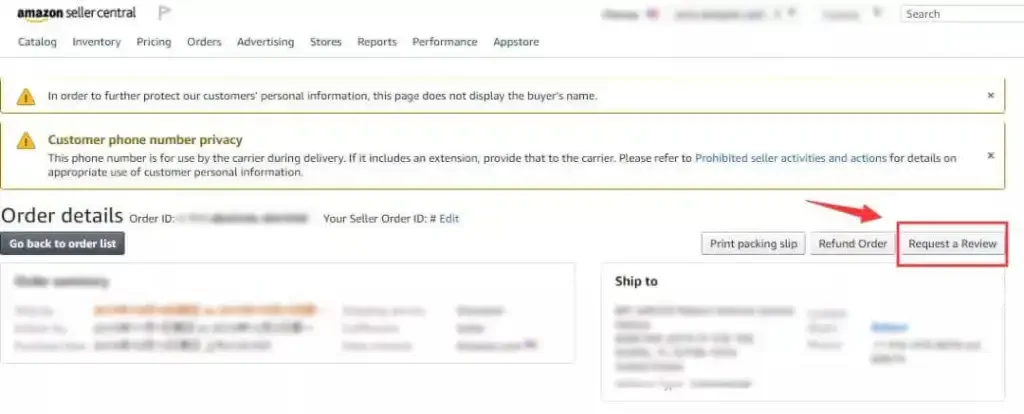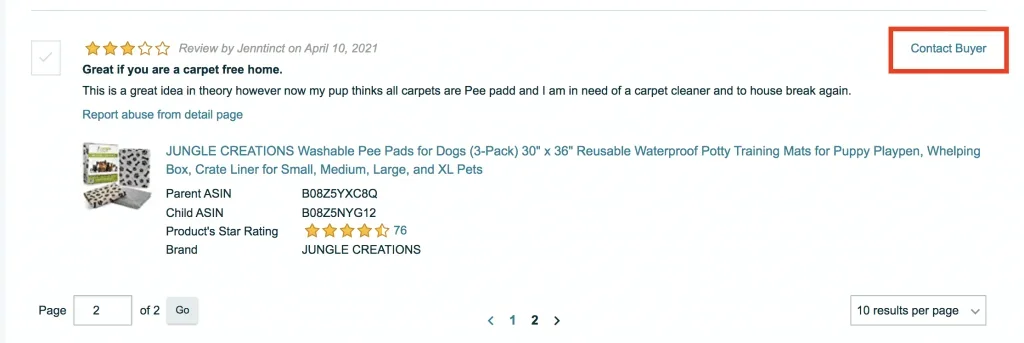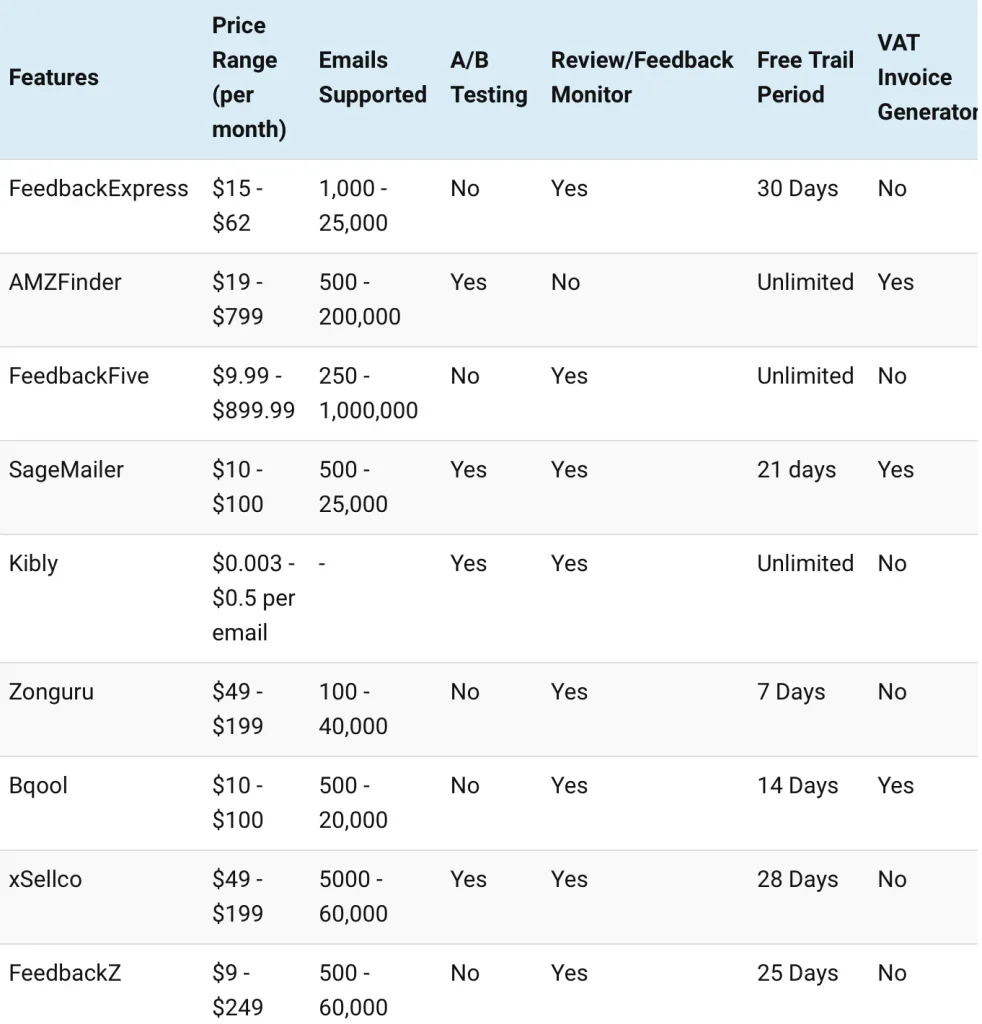In 2020, online shopping was popular. But in 2022 it became a lifestyle mainstay, with 48% of consumers shopping on Amazon at least once per week.
We know that product reviews can make or break a new Amazon seller. According to a 2017 G2 and Heinz Marketing study, 92% of customers are more likely to purchase a product after reading a positive review.
Despite knowing how critical reviews are, sellers have difficulty getting reviews; in fact, 57% of sellers say it’s a challenge.
When launching a product this year, you must know how to get reviews on Amazon. Here we will outline the best practices for getting great reviews that can boost your sales.
Table of Contents
How Amazon calculates ratings and why they’re important
How to get reviews on Amazon
Tools that can help get positive Amazon reviews
Know the rules for Amazon reviews
Other strategies for improving Amazon reviews
Conclusion
How Amazon calculates ratings and why they’re important
Since Amazon removed incentivized reviews and introduced new verified and unverified reviews, calculating a product’s rating has become increasingly complex because all ratings and reviews are not weighted equally.
Amazon uses a complex algorithm to calculate the average rating of a product. So, even a product with just one five-star review could be rated anywhere from 0-5 stars.
Amazon does not reveal the factors involved in this algorithm, but the following are considered important:
- Review age
- Reviewer profile (number of reviews, the average rating of reviews left, etc.)
- Length of review
- Number of helpful votes
- Verified or unverified
- Rating vs written review
- Deviation from the average rating
Which reviews will tend to show up at the top? A recent, long review with many helpful votes, written by a reviewer with a strong reviewer profile, will certainly make an impact.

How to get reviews on Amazon
So, what can sellers do to get good reviews on Amazon while still following Amazon’s policies around reviews? Here we will list the best ways to get reviews.

Use Amazon’s ‘Request a Review’ button
The ‘Request a Review‘ button allows the seller to request reviews for each order manually.
Sellers must use the ‘Request a Review’ button within 4 to 30 days of the product being delivered.
Other things to know about the ‘Request a Review’ button:
- The message is standard and cannot be customized
- Product rating requests and seller feedback requests are sent in the same email
- It doesn’t disallow you from requesting a review separately (such as through an email list or product insert)
The button is found within Seller Central on the Manage Orders page. However, this can be automated using a tool such as Jungle Scout’s chrome extension, which is, of course, much easier than pressing it manually for each order.

Enroll in the Amazon Vine program
Amazon’s Vine Program connects registered sellers with insightful reviewers. Through this program, Amazon’s chosen reviewers receive the product for free to test out and subsequently review. The program is open to sellers with Amazon brand-registered products with at most 30 reviews.
After the first Vine review is published, the seller will be charged a US$ 200 enrollment fee once per parent ASIN. The seller will not be charged a fee if the enrolled product receives no reviews within 90 days.
In many ways, this is similar to the incentivized review programs previously banned by Amazon. The only difference is that Amazon is vetting the reviewers in the program.
According to Amazon, when using the Vine program, “25% of reviews received occur within 5 days of the order, while 99% of reviews received occur within 35 days of the order.” This helps newly registered products get reviews fast.

Utilize product inserts
Product inserts are one of the most popular ways to encourage customers to leave reviews on Amazon, as they can help remind customers to leave a review. Product inserts often take the form of a card that’s inserted into the package.
Sellers must be careful to follow Amazon’s rules regarding incentivizing reviews.
Best practices for product inserts:
- Ask for product reviews, but remain neutral. Asking people to leave a positive review — or even showing a picture with five stars — is against Amazon’s guidelines.
- Give helpful information about the company and the product.
- Provide contact information if an issue comes up. (Customer service helps mitigate negative product reviews).
- Ask people to join your email lists or follow you on social media. This will help you in the future. One way to get an email address is to ask them to register for an extended warranty.

Discounted products
Using product discounts increases the likelihood of reviews. It also improves sales upon release, which creates sales velocity that looks good for your brand. However, remember that because you cannot incentivize customers for reviews, offering a discount is not guaranteed to result in a review.
Create an external email list
In recent years, the seller messaging system and third-party automated responders on Amazon have become limited, so creating an external email list to communicate with your shoppers can be helpful.
Creating this list externally is vital because as long as customers buy your products via Amazon, they’re considered Amazon customers.
Ways to create an email list outside of Amazon:
- Through social media
- Create a blog asking people to subscribe
- Use product inserts.
Once you have established a mailing list, you can use it to request reviews from those who have purchased from you.
Additionally, if you have an email list, you can send new products directly to the people on this list. This accomplishes two major things:
- You get vital initial sales velocity.
- It als increases the likelihood of reviews because the list is more likely to include people who already like your brand and your products.
Sales velocity is critical for Amazon. Some also believe Amazon rewards brands that produce sales from outside of Amazon.
Also, your email list will likely include people who like your product and are more likely to leave positive reviews.
Request reviews from customers who have left seller feedback
Most buyers on Amazon need help understanding the difference between seller feedback and product reviews (which is why it’s a problem that a request for review and seller feedback are sent together with the ‘request a review’ button). Some customers leave reviews in the Seller Feedback, so it’s crucial to review seller feedback consistently.
Only a minority of buyers leave any feedback, so those who’ve left seller feedback are more likely to leave product reviews. As a seller, you can proactively email all customers who have left positive seller feedback and request they leave a product review.
Including an attachment explaining how exactly to leave product reviews can be helpful.
Request reviews from customers who you’ve provided customer service to
If you provide excellent customer service, many people will happily leave a review regardless of the product. This customer service engagement can include:
- Questions about a product before a purchase
- Technical support after a purchase
- Returns for a product that is no longer needed
- Generally, making a previously unhappy customer happy.
When it comes to customer service, the most straightforward reviews to get are from those who ask a question before ordering and then order the product. You can check in with them a week after purchasing to ensure they received the product. After they respond to your business email, you can ask for a review.

Contact critical reviewers
Sellers enrolled in Brand Registry can now contact customers who left a critical (1 to 3-stars) review for a product they purchased. This feature can help you improve the customer’s experience, which can result in them removing or changing their review.
There are some important notes about this buyer contact feature:
- Amazon sends critical reviewers a canned message (the seller cannot send a custom message until the customer responds to the initial message).
- As a seller, you must be Brand Registered.
- There is a contingency on the customer revising the review.
Of course, this won’t get you more reviews, but having customers change or remove negative reviews is likely more impactful to your brand.
Tools that can help get positive Amazon reviews
So much of running an Amazon business can be automated, so it was only a matter of time before getting reviews could be automated. Here are some tools you can use as a seller to help get positive Amazon reviews:
Feedback Express
Feedback Express is one of the best Amazon review tools in the market. It allows you to set up automated emails for customers who purchased from your Amazon store. You can configure three types of messages:
- Customer service email
- Request for seller feedback
- Request for product reviews.
These messages can be edited, fine-tuned, and personalized to make them more relevant to your buyers.
AMZFinder
AMZFinder allows sellers to connect efficiently with their customers and ask them to share their shopping experiences. They assist you in automatically sending feedback and review request emails and managing reviews and orders to improve credibility and customer ratings on Amazon proactively.
To make things convenient, AMZFinder has split its services into two halves: Feedback Request and Review Management.
FeedbackFive
FeedbackFive is quite similar to AMZFinder; merchants can send customized messages to their buyers at the time they choose. You can use existing templates or design your own, and you can also add specific information that is relevant to your buyers. These messages can also include images and emojis to improve the odds of receiving seller feedback and product reviews.
SageMailer
Like other tools, you can send automated messages using a template or your creativity with SageMailer. You can also use images, company logos, and further important details with the help of dynamic tags in your emails.
Kibly
With Kibly, you can send automated, customized follow-up emails to your customers, requesting them to provide product reviews. You can also send a postcard directly to your clients – that’s right, an actual letter.
See a comparison of these tools in the graphic below that includes price information.


Know the rules for Amazon reviews
Amazon takes its product reviews very seriously. When trying to get reviews on Amazon, you must understand the difference between legal methods and other tactics (which can get your business suspended from Amazon). Many sellers are suspended due to review manipulation.
Amazon product review rules to know:
- You cannot incentivize reviews.
- You cannot cherry-pick reviews, i.e. asking for reviews from customers you know have had a good experience while ignoring those who’ve had a neutral or negative experience.
Other strategies for improving Amazon reviews
Some other things you can do to improve your review profile include:
- Review upvoting – upvote top reviews, so they are nearer to the top and overtake negative reviews.
- Get negative reviews removed.
While it’s challenging to get negative reviews removed because Amazon loathes removing reviews, it is possible. So, even if there is a low success rate, it’s worth trying to get negative reviews removed. The exception is reviews that include offensive language or URLs – these are much easier to get removed.
Another review category that Amazon is sometimes willing to remove is entirely fulfillment-based reviews for products fulfilled by Amazon. If requesting this type of removal, open a case within Seller Central, link to the review, and clearly state why you are requesting removal.
Some services now will automate non-compliant review removal for you, such as uglyfeedback.com. They use bots to scan reviews, look for ones that violate Amazon’s terms of service, and submit a removal request.

Conclusion
Positive reviews on Amazon can make a huge difference for sellers as they can contribute to where products rank, and consumers take this information into consideration when making purchasing decisions.
Increase the likelihood of getting positive reviews by:
- Using the ‘request a review’ button
- Enrolling in the Vine program
- Use product inserts
- Creating an external mailing list
- Offering discounted products
- Contacting critical reviews.
Don’t forget to play within the rules and stay within Amazon’s review guidelines – you cannot incentivize customers to get positive reviews.
Follow these steps on your next product launch and get the most out of the reviews on your products.



